On March 9, 2024, the Miss World 2023 pageant was held to choose a beauty queen once again. The crown went to Krystyna Pyszková of the Czech Republic. To honor this event, we decided to take a look at the history of the contest and find out how the jury’s approach to assessing women’s beauty has changed over the decades.
1950s: it all started with a scandal.

Kiki Håkansson (Sweden), Miss World 1951
In 1951, as part of the Festival of Britain, the Festival Bikini Contest was held, which journalists later named Miss World. This event became a scandal because in those days a bikini was considered indecent.
Swedish beauty Kikki Håkansson became the winner of this first pageant. And to this day, she remains the only winner to have received her crown while wearing a bikini. Later, the finalists would wear a one-piece swimsuit or evening gown to the awards ceremony.

Denise Perrier (France), Miss World 1953, and Marita Lindahl (Finland), Miss World 1957
Despite the 1951 bikini scandal, the contest founder Eric Morley was pleased with the public attention and decided to hold the pageant annually. His requirements for potential participants were as follows: single women without children aged 17 to 27.
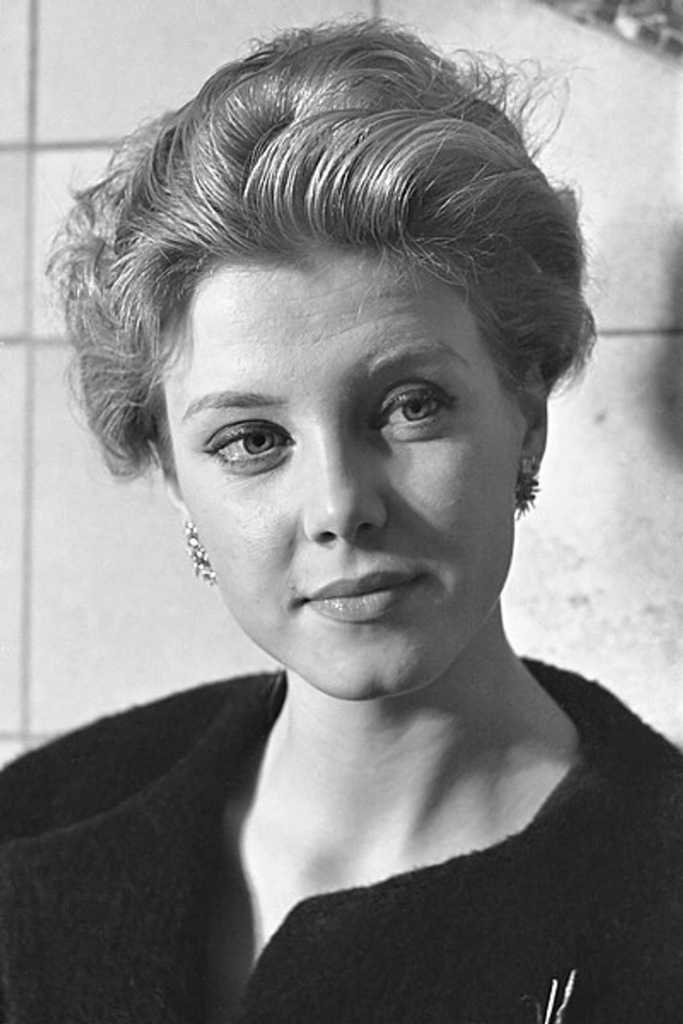
Corine Rottschäfer (Netherlands), Miss World 1959
In 1959, a major British television channel agreed to broadcast the pageant, thus making it even more popular. Corine Rottschäfer found herself in a delicate situation before the awarding ceremony when she discovered that her evening gown had holes in it. Another contestant lent Corine the dress and eventually finished third, while Corine became the winner.
1960s: Miss World is gaining momentum.

Katharina Lodders (Netherlands), Miss World 1962
In the 1960s, the Miss World pageant became one of the most watched television shows. The cash prize for the winner was increased from £500 to £2,500. In 1961, the requirements for contestants were also changed: the upper age limit was now 25 years old.
Katharina Lodders, who was crowned in 1962, addressed these criteria in her own way. On collecting the award, she said out loud, «I don’t think I’m the most beautiful girl in the world — I am the most beautiful girl here.»

Ann Sidney (Great Britain), Miss World 1964
In 1964, the winner was Ann Sidney, who later made a career in the movie industry. By the way, Morley introduced a new rule that same year: he forbade the mothers of contestants to accompany their daughters. The reason why was because the mother of one of the girls caused a lot of inconvenience to the organizers, getting involved in their work.
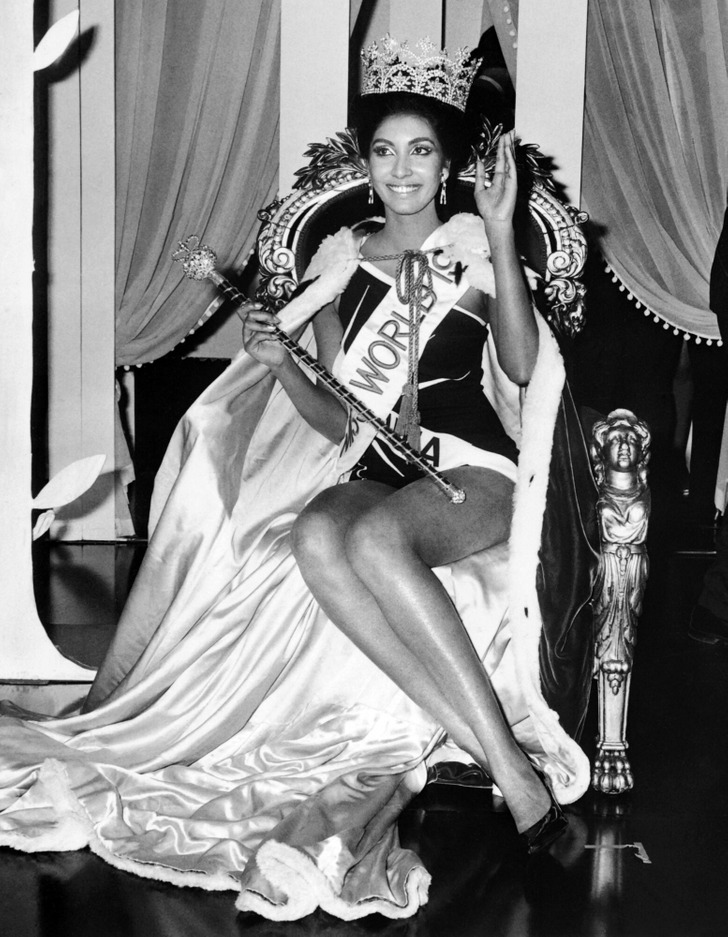
Reita Faria (India), Miss World 1966
In the late 1960s, the contest became even bigger. In 1966, Morley sent invitations to more than 70 countries, 66 of which were happy to respond. And in 1968, for the first time in the history of the event, a married girl was allowed to participate. In the 1970s, however, a strict criterion for the marital status of contestants was reintroduced: single only, period.
1970s: feminists change the essence of the pageant.
Jennifer Hosten (Grenada), Miss World 1970
The beginning of the decade was marked by a new scandal. In 1970, a week before the pageant, British feminists claimed that Miss World objectified women and threatened to interrupt the show. And they did it. When the event was in full swing, some female guests rose from their seats and began to blow whistles, jingle rattles and shout slogans. Later, the movie Misbehaviour starring Keira Knightley was based on these events.
In 1970, Jennifer Hosten won the crown. She became the first black woman to win it.
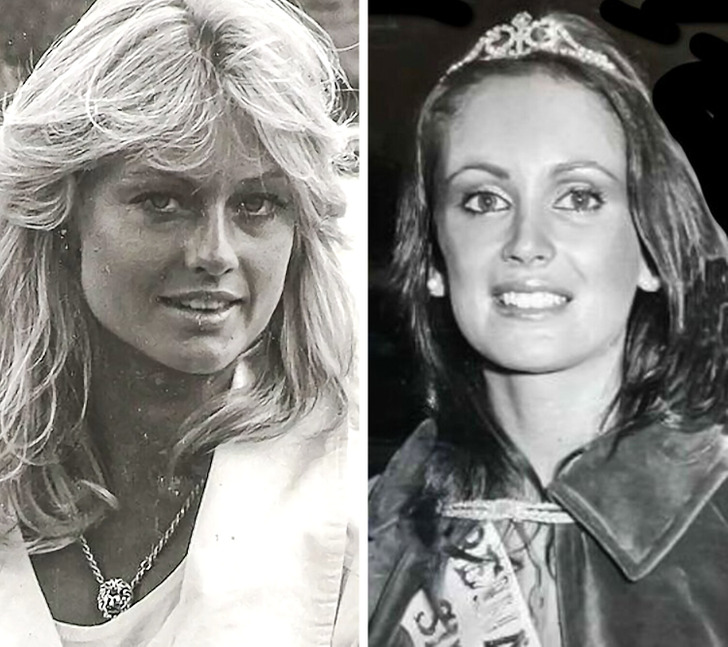
Marie Stävin (Sweden), Miss World 1977, and Silvana Suárez (Argentina), Miss World 1978
The conflict with feminists forced the organizers to think about the message the pageant was sending to the world. And in 1972, Eric Morley and his wife announced that the event would now be held under the slogan «Beauty With a Purpose.» The contestants were also required to present their charity projects to the jury.
1980s: «Beauty With a Purpose»
Mariasela Álvarez (Dominican Republic), Miss World 1982
In the 1980s, the slogan «Beauty With a Purpose» got another meaning: new tests of intelligence and personality were added to the contest program. In the eyes of the judges, the contestants’ personal qualities became as important as their looks.
Giselle Laronde (Trinidad and Tobago), Miss World 1986
In the second half of the decade, the contest became criticized again. The public in different countries didn’t like the fact that girls were judged only by representatives of Western countries. And in 1986, Morley decided to hold the preliminaries of the contest in Macau and give the Eastern judges the opportunity to select the contestants. The winner that year was Giselle Laronde from Trinidad and Tobago. This was the first time a representative of this country won the crown.
Ulla Weigerstorfer (Austria), Miss World 1987
And in 1987, the organizers ignored their own rule that allowed to participate girls aged only 17 to 25 and let a 26-year-old beauty to compete for the crown. Later, the upper age limit would be made 27 again.
1990s: crisis
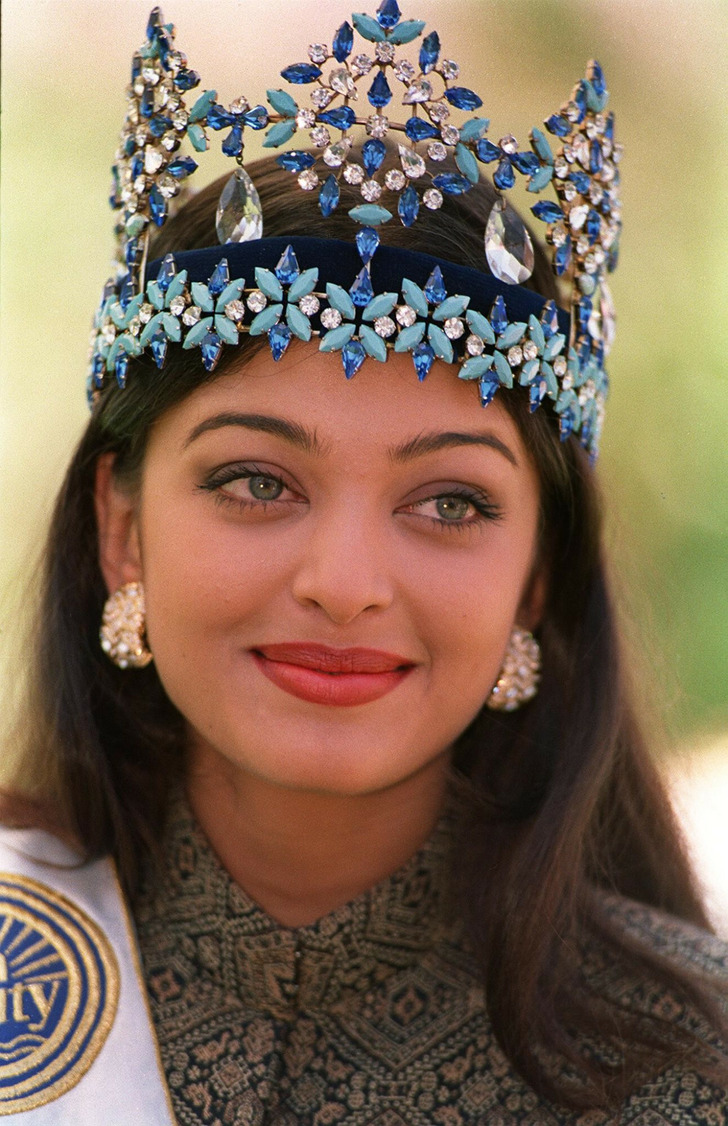
Aishwarya Rai (India), Miss World 1994
In the early 1990s, the popularity of the contest began to decline, and major TV channels stopped broadcasting it. But Morley wasn’t going to give up and managed to find ways to organize the contest at a lower cost.
Yukta Mookhey (India), Miss World 1999
In the second half of the decade, the organizers decided to gather a jury of representatives of different professions from all over the world in order to increase the interest of the audience. So, now beauties were judged by actors and actresses, athletes, magazine editors, and top models from different countries.
2000s: a woman takes the reins.
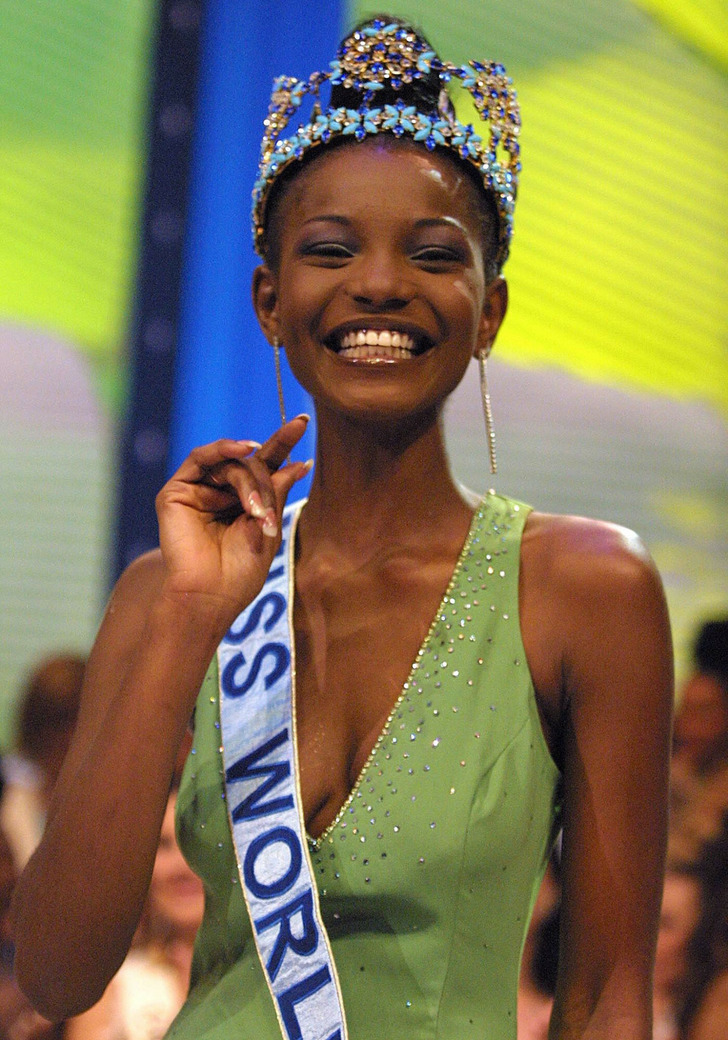
Agbani Darego (Nigeria), Miss World 2001
In 2000, Eric Morley passed away, so his wife Julia took on her husband’s work and decided to make some adjustments. For example, she called the pageant «stupid and horrible» and promised to make it «more positive» for women. She condemned the part of the show where girls had to first parade around in swimsuits and then give interviews about their life ambitions. «Not because I thought there was something wrong, horrible, and unnatural about swimsuits, but I thought you generally don’t feel comfortable if someone is interviewing you in a tux, and you are in a bathing suit,» Julia said.

Rosanna Davison (Ireland), Miss World 2003, and Kaiane Aldorino (Gibraltar), Miss World 2009
In 2004, Julia Morley surpassed her spouse by managing to gather a then record number of participating countries — 107 girls took part in the competition.
2010s: no swimsuits
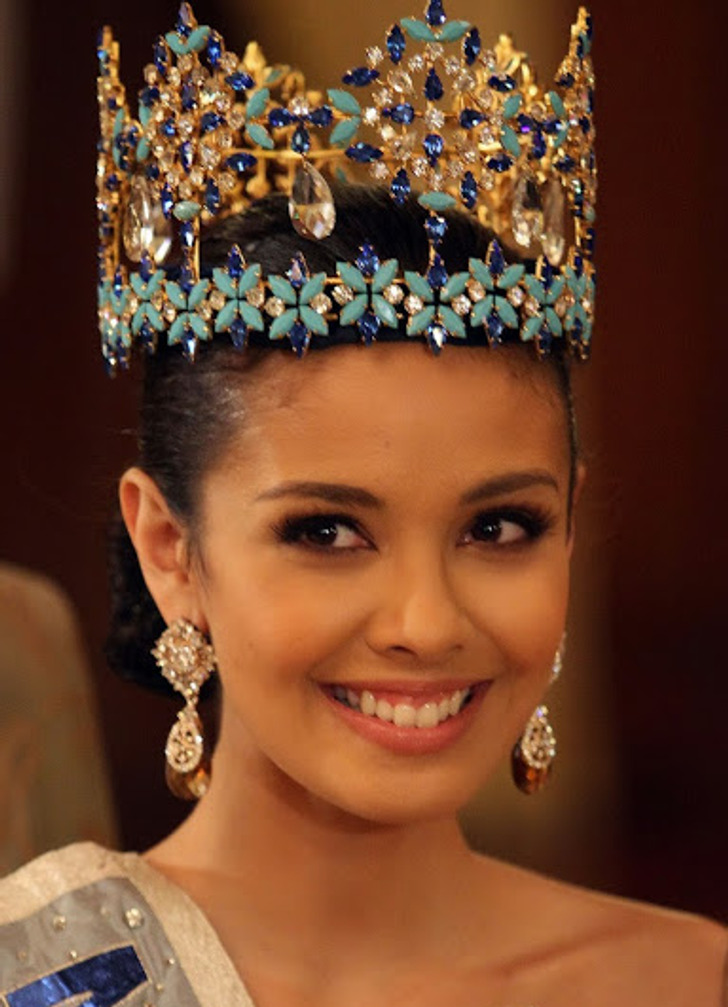
Megan Young (Philippines), Miss World 2013
In 2013, the contestants traveled to Bali. It was the first time the event was held in Southeast Asia. Also, for the first time in the history of the contest, a girl from the Philippines, Megan Young, won the crown.
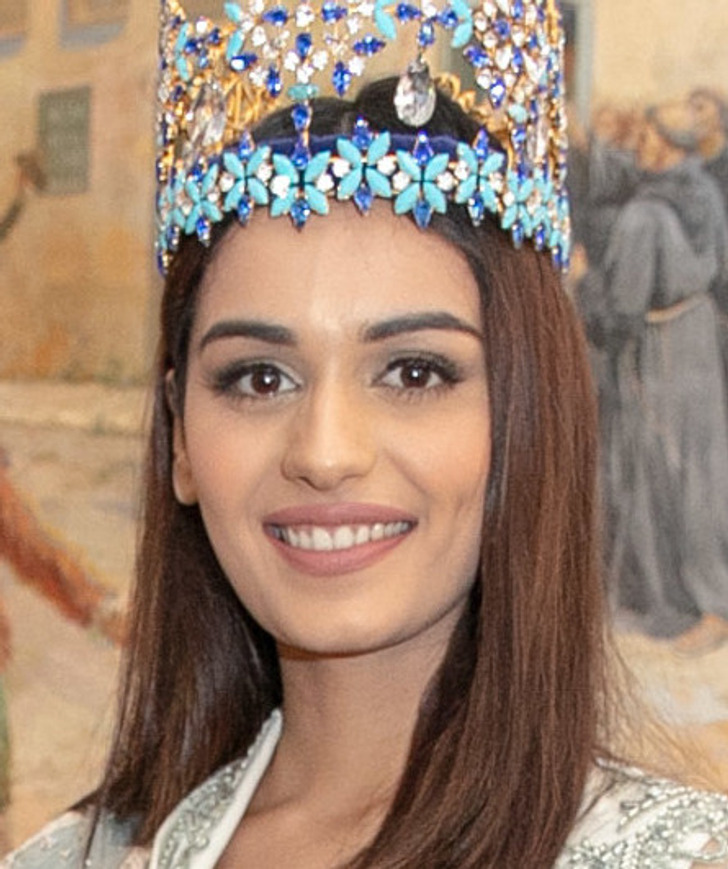
Manushi Chhillar (India), Miss World 2017
Julia Morley, who had previously voiced her discontent with overly revealing costumes of contestants,
decided to remove the swimsuit competition from the pageant in 2015. She said, «We are really not looking at her bottom. We are really listening to her speak.»
2020s: what’s next?
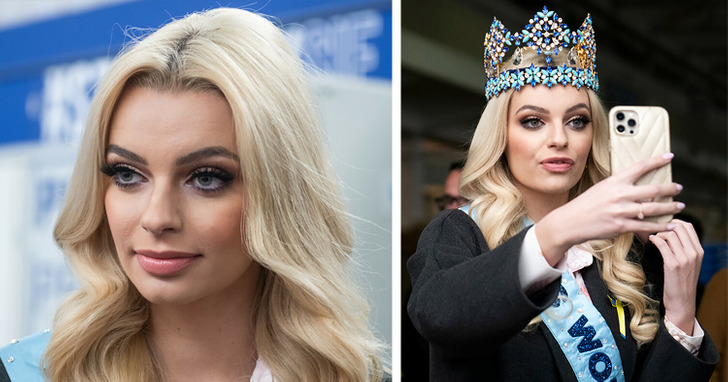
Karolina Bielawska (Poland), Miss World 2021
The first event of the new decade wasn’t really big. In 2022, the number of countries participating in the contest was the smallest since 2003 — only 97. The winner was Karolina Bielawska from Poland. Next time, the Miss World jury gathered in 2024 and crowned Krystyna Pyszková from the Czech Republic.
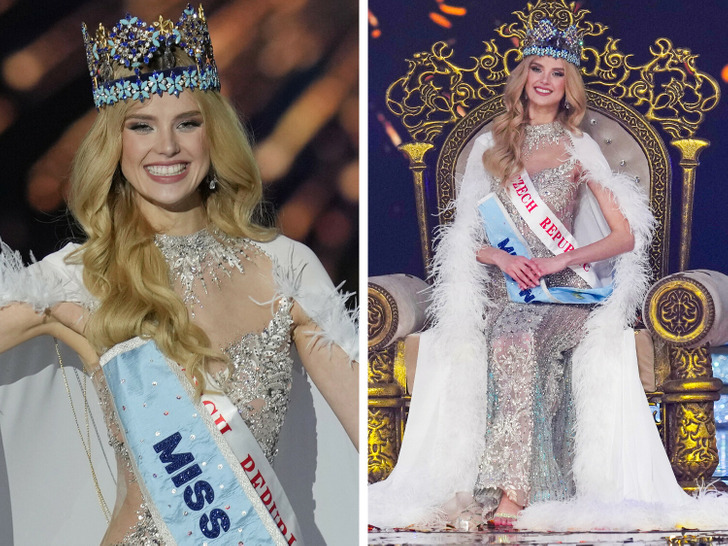
Krystyna Pyszková (Czech Republic), Miss World 2023
Since modern trends criticize various beauty standards, there is a possibility that the Miss World organizers will choose to stop using any selection criteria for future contestants, following the example of Miss Universe. In 2023, the latter removed the upper age limit for contestants. And since Julia Morley suggests that it is personality that should be evaluated, we are sure that changes in the contest are not long to wait.
Speaking about Miss Universe. Here’s what 16 Miss Universe winners look like now.
Preview photo credit Harry Pot / Nationaal Archief / Wikimedia Commons, CC BY-SA 3.0 NL DEED, Historia de la belleza / Wikimedia Commons, EAST NEWS, Rajanish Kakade / Associated Press / East News
I Came Home with My Newborn Twins to Find the Locks Changed, My Stuff Thrown Out, and a Note Waiting for Me

After giving birth to my first children, I thought my husband would start choosing us more over his mother, but that wasn’t the case. This time, he’d chosen her side over me for the last time, so I exposed her for the bully and liar she was.
You’d think bringing home your newborn twins would be one of the happiest moments of your life. For me, it started like that, but it soon turned into an absolute nightmare!
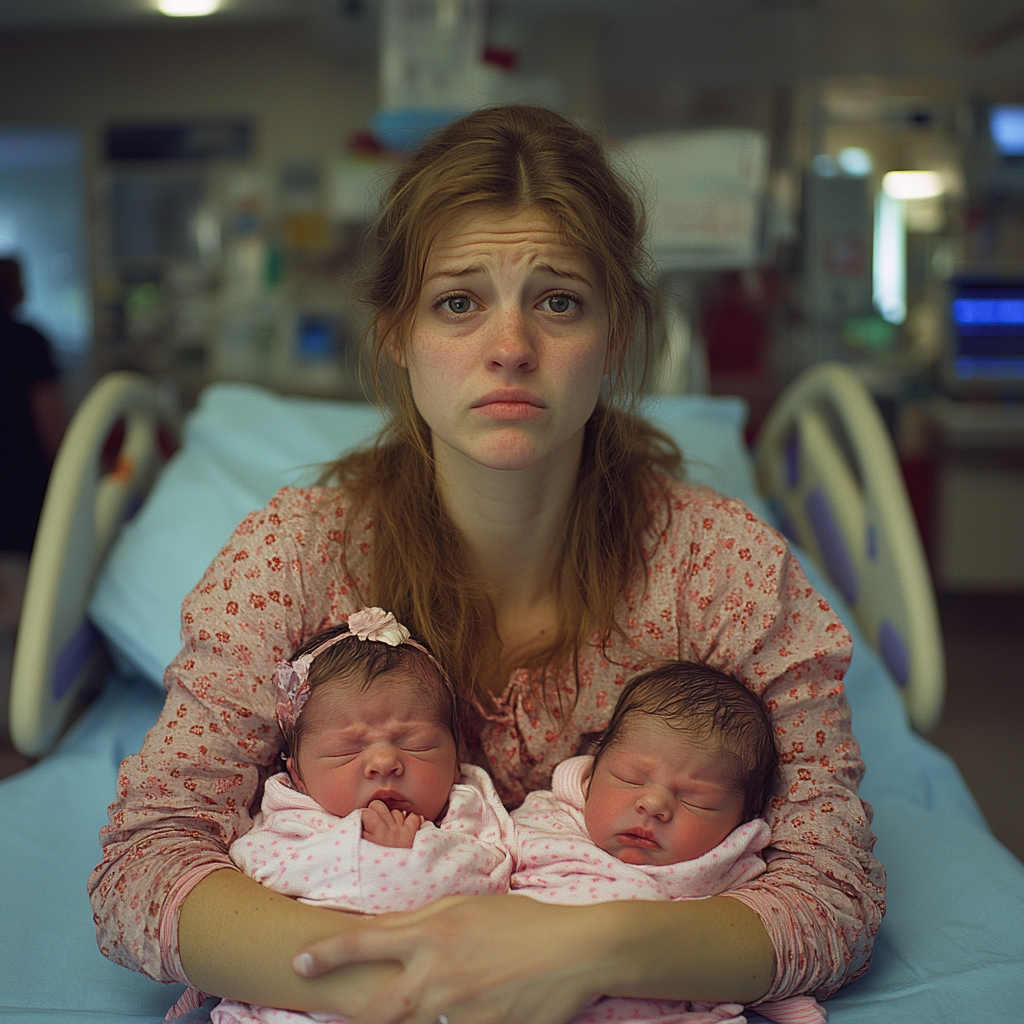
An upset mother with her newborn babies | Source: Midjourney
After three days in the hospital, recovering from a grueling delivery, I was finally discharged and ready to head home with my beautiful twin daughters, Ella and Sophie. I’d imagined this moment for months: Derek, my husband, picking us up at the hospital with flowers, tears of joy in his eyes as he took one of the girls into his arms.
But instead, at the last minute, I got a hurried phone call that changed everything…

An upset woman on a call | Source: Midjourney
“Hey, baby,” my husband said, his voice clipped. “I am so sorry, but I can’t come pick you guys up as planned.”
“What?” I asked, adjusting the swaddle around Sophie. “Derek, I just had twins. What’s so important that you can’t—”
“It’s my mom,” he interrupted. “She’s in bad shape. Hectic chest pains. I need to pick her up and take her to that hospital close to her.”
His words hit me like a bucket of cold water. “What? Why didn’t you tell me earlier? Derek, I need you here.”
“I know,” he said, exasperated. “But this happened suddenly, and it’s serious. I’ll come to you as soon as I can.”

An anxious man on a call | Source: Midjourney
I gritted my teeth, fighting the urge to scream because of how disappointed and frustrated I felt, but I replied, “Fine. I’ll just get a taxi.”
“Thank you,” he mumbled before hanging up.
My husband’s mother lived in a different city, so the chances of him getting back that same day to get me and the babies were unrealistic. Knowing how obsessed Derek was with his mother, he wasn’t going to leave her by herself, hence the taxi.

An upset woman on a call | Source: Midjourney
As the line went dead, my heart sank. I wanted to believe Derek wasn’t being callous, just overwhelmed and a mama’s boy. Still, the disappointment stung. The same mother-in-law (MIL) who insisted we make a separate set of keys to our house so she could help me with the babies was now suddenly unwell.
I tried shaking it off as I bundled the girls into their car seats that their father had dropped off the previous day and got us into a cab.
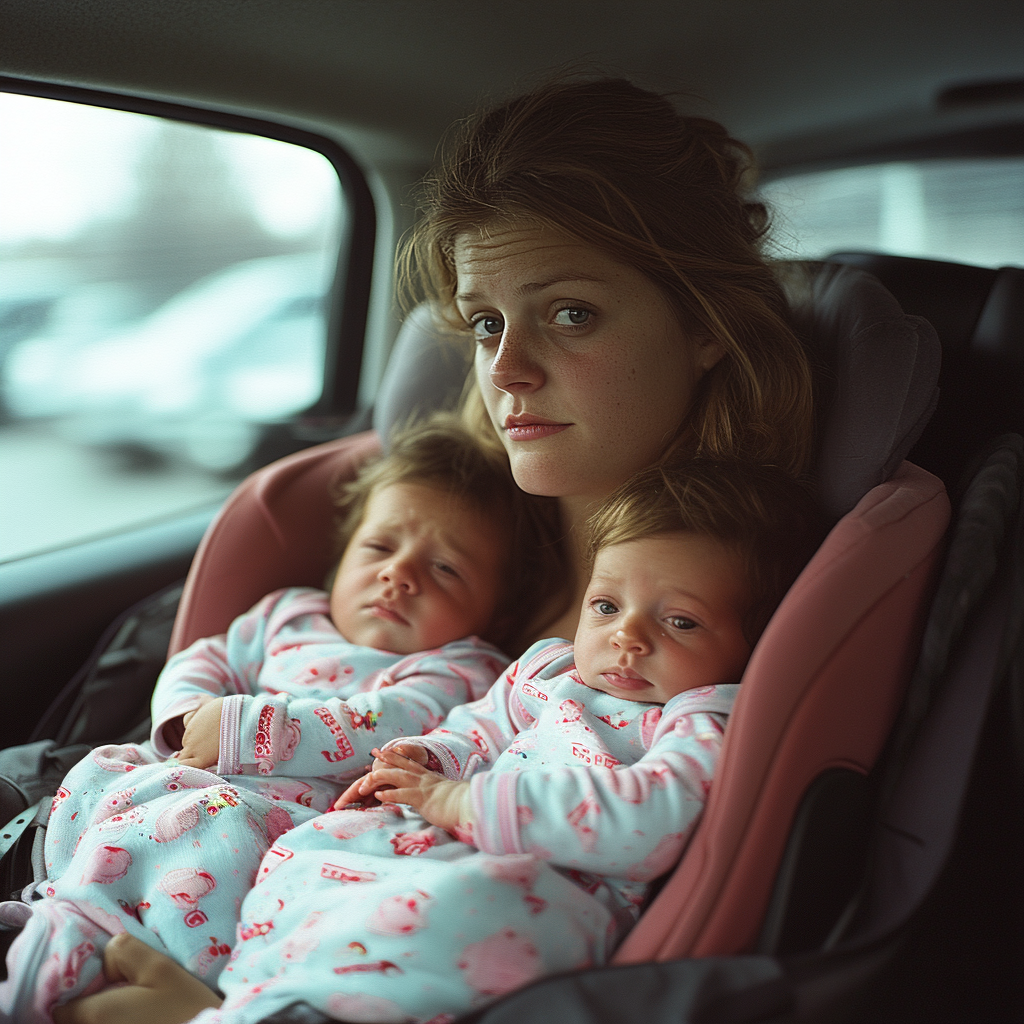
A woman in a cab with her children | Source: Midjourney
When we pulled into the driveway, I froze. My suitcases, diaper bags, and even the crib mattress were scattered across the front lawn and by the doorstep! A knot formed in my stomach. I paid the driver and stepped out with the twins, glancing around nervously. Something was obviously very wrong…

A messy front yard | Source: Midjourney
I approached the front door, fumbling with my keys while absentmindedly calling out my husband’s name, even though I knew he couldn’t be home yet. The key wouldn’t turn. Confused, I tried again. Nothing. Then I saw it, a folded piece of paper taped to a suitcase.
Get out of here with your little moochers! I know everything. Derek.
My breath caught, and my heart stopped. My hands trembled as I read the note again and again, trying to make sense of it while hoping it was a hallucination. This couldn’t be happening. Not Derek…

A shocked woman reading a note | Source: Midjourney
Not the man who held my hand through every doctor’s appointment, who cried when we heard our daughters’ heartbeats for the first time. Then the worst part of that day began…
Wanting answers, I called him immediately. Straight to voicemail. Again. Voicemail. Panic set in as Sophie’s cries joined Ella’s. I rocked their car seats, forcing myself to think.

A stressed woman holding a phone | Source: Midjourney
“Mom,” I whispered. My hands shook as I dialed her number.
“Jenna?” Mom answered on the first ring. “What’s wrong? Are the twins okay?”
I choked out the words, barely able to hold it together. I hadn’t wanted to involve my mother due to her ailing condition, but I believed this was one of those dire moments.
“Derek… He changed the locks. He threw my stuff outside. Mom, he left this awful note.”
“WHAT?!” Her voice shot up. “Stay there. I’m coming.”
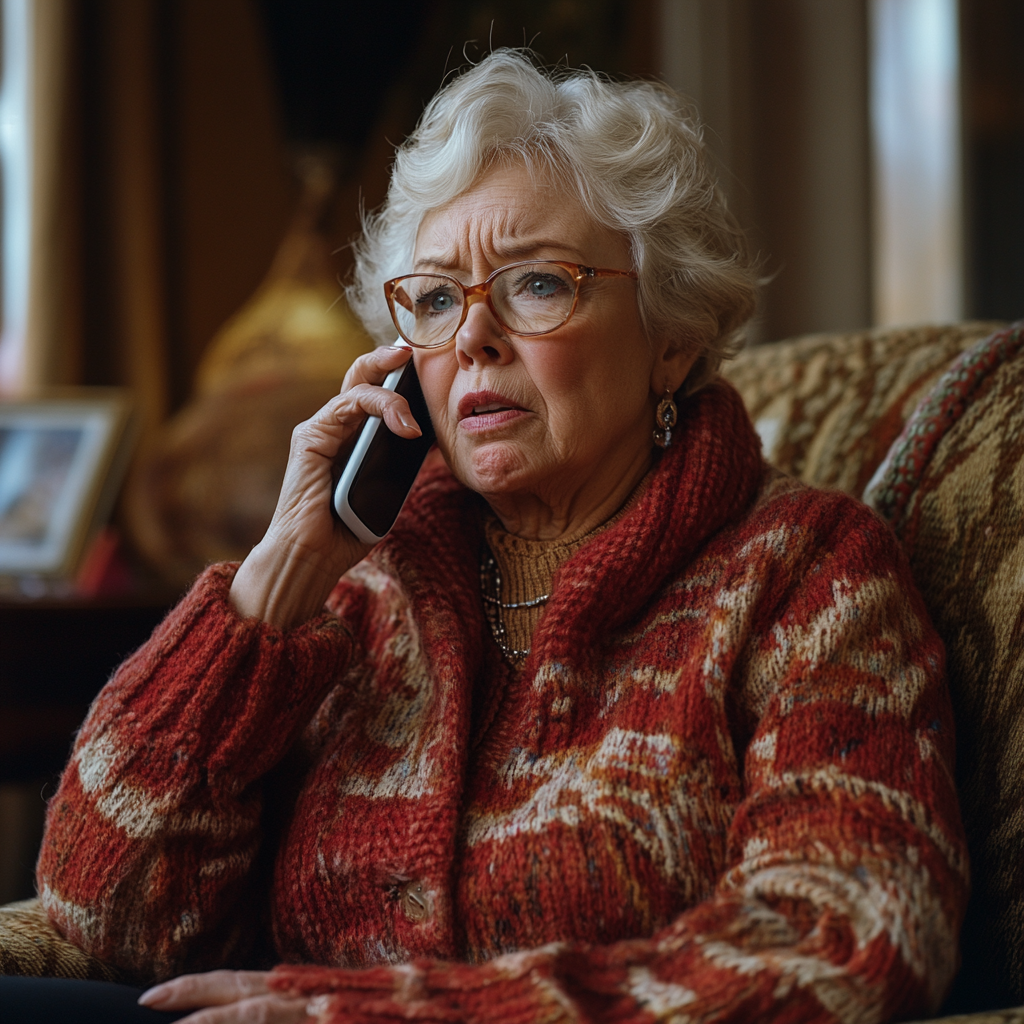
An upset older woman | Source: Midjourney
Minutes felt like hours before she arrived. Mom took one look at the mess and narrowed her eyes, fuming.
“This doesn’t make sense! Derek wouldn’t do this; he loves you and the girls!”
“That’s what I thought,” I said, rocking Ella to calm her cries. “But he’s not answering. And what does ‘I know everything’ even mean?” I asked showing her the offensive note.
“I am so sorry, my darling,” she said while hugging me close. “Let’s go to my place until we can get a hold of your husband, okay?”
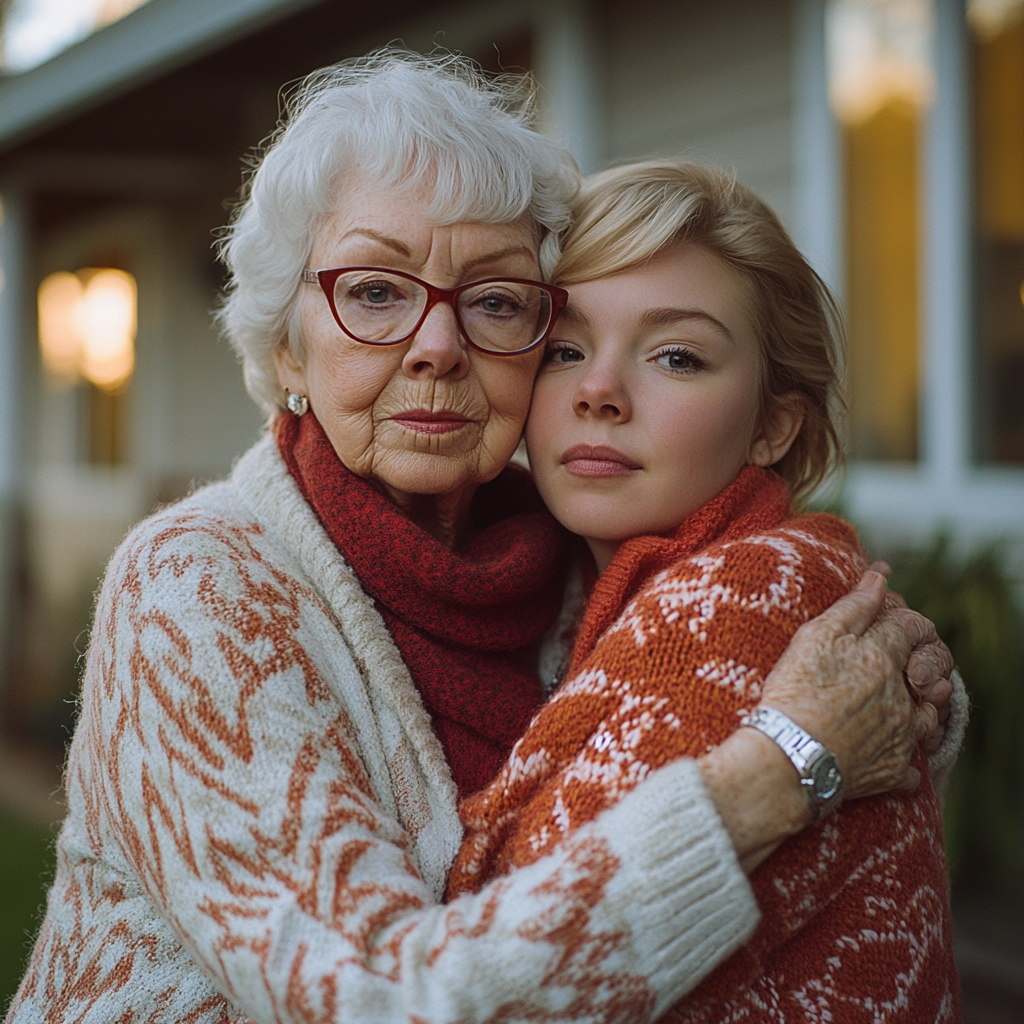
An older woman hugging a younger one | Source: Midjourney
She helped me load the bags into her car and whisked us back to her place. After my mother and I dissected what had happened and repeatedly called Derek with no answer, my anxiety spiked. That night, I barely slept.
The next morning, I decided I needed answers. Leaving the twins with Mom, I drove back in her car to the house. The yard was empty, my belongings gone. I knocked on the door. No response. I walked around to the back, peering through the windows, and froze.

A shocked woman peaking through a window | Source: Midjourney
Derek’s mother, Lorraine, sat at the dining table, sipping tea! I banged on the door, and she looked up, startled, almost spilling her tea before she saw me and smirked.
“What are you doing here?” I demanded, banging on the door.
Lorraine rose leisurely and opened it just a crack. “Jenna. You’re not welcome here, didn’t you see the note?”
“Where’s Derek?” I snapped. “Why did he—”
“He’s at the hospital in my city,” she said smoothly. “Taking care of his sick mother.”

A nonchalant older woman standing by a door | Source: Midjourney
I stared at her, disbelief washing over me. “Sick? You’re standing right here!”
She shrugged, her lips curling into a malicious smile. “Maybe I’m feeling better. Miracles happen.”
“You lied to him, didn’t you? You faked being sick!”
Her smile widened. “And?”
My hands balled into fists. “Why? Why would you do this?”
She crossed her arms, her smugness growing.

A smug older woman | Source: Midjourney
“I told Derek from the start that our family needs a boy to carry on the name. But you? You gave us two girls. Useless,” she confessed unapologetically, finally speaking her truth after all these years I’ve been with her son.
Her words knocked the air out of me. I was too stunned to speak, and she took my silence as permission to keep going.
“I knew you’d ruin my son’s life, so I took matters into my own hands. The note was a bit much, but I needed you to believe he wanted you gone. I even ensured he couldn’t call you by taking his phone right out of his pocket when he wasn’t looking. You were supposed to take your things and get out of our lives, but here you are…”
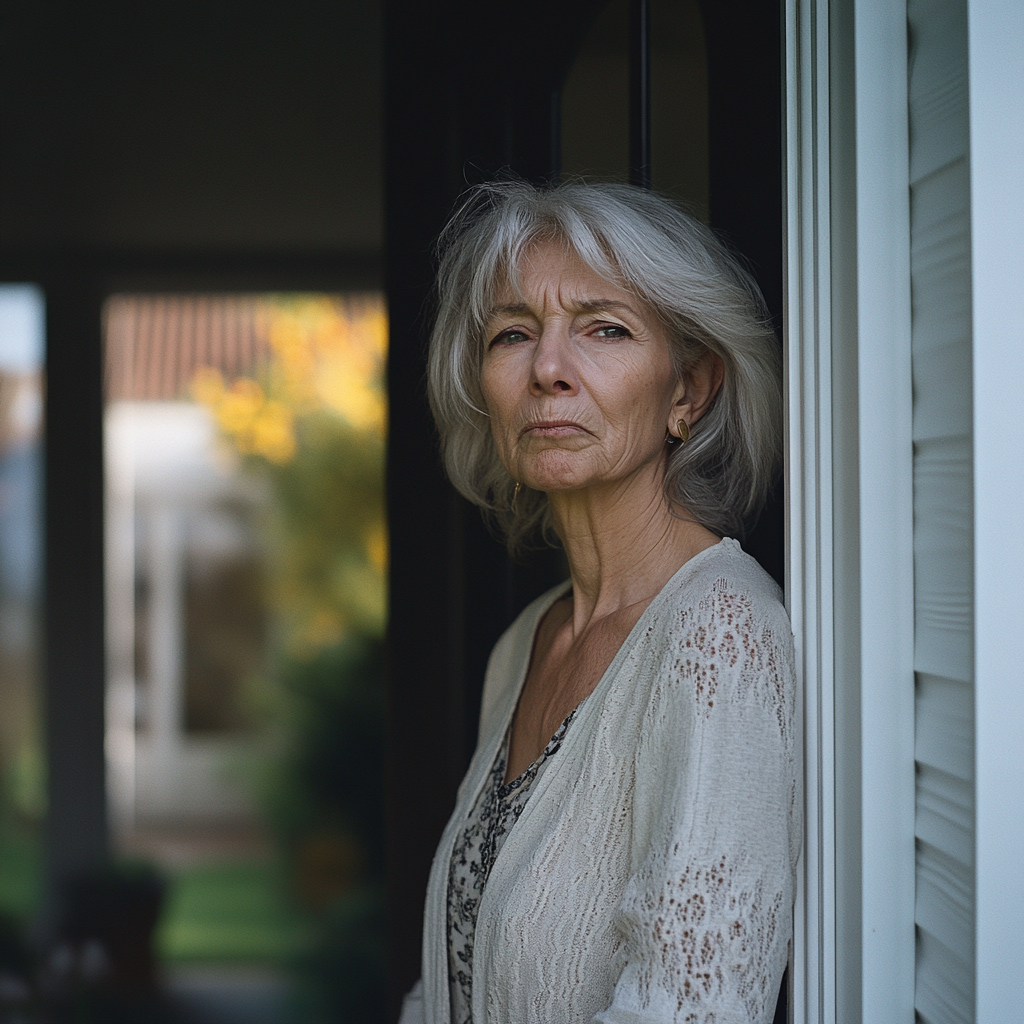
An angry older woman | Source: Midjourney
I couldn’t breathe. This woman had orchestrated everything, lied to her son, and got him to take her to the hospital under false pretenses before sneaking away, locked me out of my home, and stole his phone all because she disapproved of my daughters!
“You threw us out over that?”
“Of course,” she said, unbothered. “I even bribed a nurse at the hospital to keep him there. And it worked, didn’t it?”
I felt sick. “You’re deranged!”
“Call me what you want,” she sneered. “I call it protecting my family. Besides, my Derek always takes my side and will see things my way as usual.”

An arrogant older woman | Source: Midjourney
Her words echoed in my mind as I drove to the hospital where my husband was still waiting. With every mile, my anger grew. How could she justify such cruelty? My hands gripped the wheel tightly, knuckles white with fury.
I knew my MIL was mean, but I didn’t think she was evil! She never approved of my relationship or marriage to her son, always believing Derek deserved someone wealthier and fancier, unlike me.

An upset woman driving | Source: Midjourney
When I reached the hospital, I found my husband pacing in the waiting room, his eyes shadowed with worry.
“Jenna!” he said, rushing toward me. “Where have you been? I don’t have my phone or know your number by heart, so I couldn’t call you!”
“Your mother took your phone,” I cut him off. “She faked her illness and locked me out of the house!”
He froze, confusion and anger flashing across his face. “What? That doesn’t make any sense.”

A man at a hospital | Source: Midjourney
“She set me up, wrote a fake note from you sending me away, and bribed a nurse to lie to you,” I said, my voice trembling. “Lorraine’s at our house, sipping tea like she’s the queen of the world!”
“Wait. What? Why would she…”
“Because our daughters aren’t boys,” I said bitterly.
The shock turned to rage on his face. Without saying a word, he grabbed his keys and stormed out, with me following close behind. When we got home, Lorraine was exactly where I’d left her, looking utterly unbothered.

An older woman having tea | Source: Midjourney
But her smugness vanished when she saw the determined look on Derek’s face.
“Mom,” he said, his voice cold and sharp. “What did you do? I thought you were in the hospital?”
She opened her mouth, likely to lie, but Derek cut her off. “Save it. I know everything.”
“Derek, I was just trying to—”
“You’ve done enough,” he snapped. “You made me abandon my wife and children for a fake emergency! Then you locked my wife, who just gave birth, and our newborn babies out of our home! On top of that, you cut our ability to communicate during such a crucial time by stealing my phone!”

An angry man shouting | Source: Midjourney
“Derek, darling… I just wanted to keep you safe. This isn’t how this was supposed to go,” my MIL replied pleadingly.
“Keep me safe from my wife and children? Who told you I wanted boys? What makes you think my girls aren’t good enough for me just because of their gender? That’s a problem you have, not me, and if you want sons, I suggest you go make them yourself!”
I stood with my mouth agape, having never seen Derek this angry! I won’t lie, a part of me was proud that he was proving himself worthy of me by defending my and the children’s honor. At that moment, I loved him more than ever before!
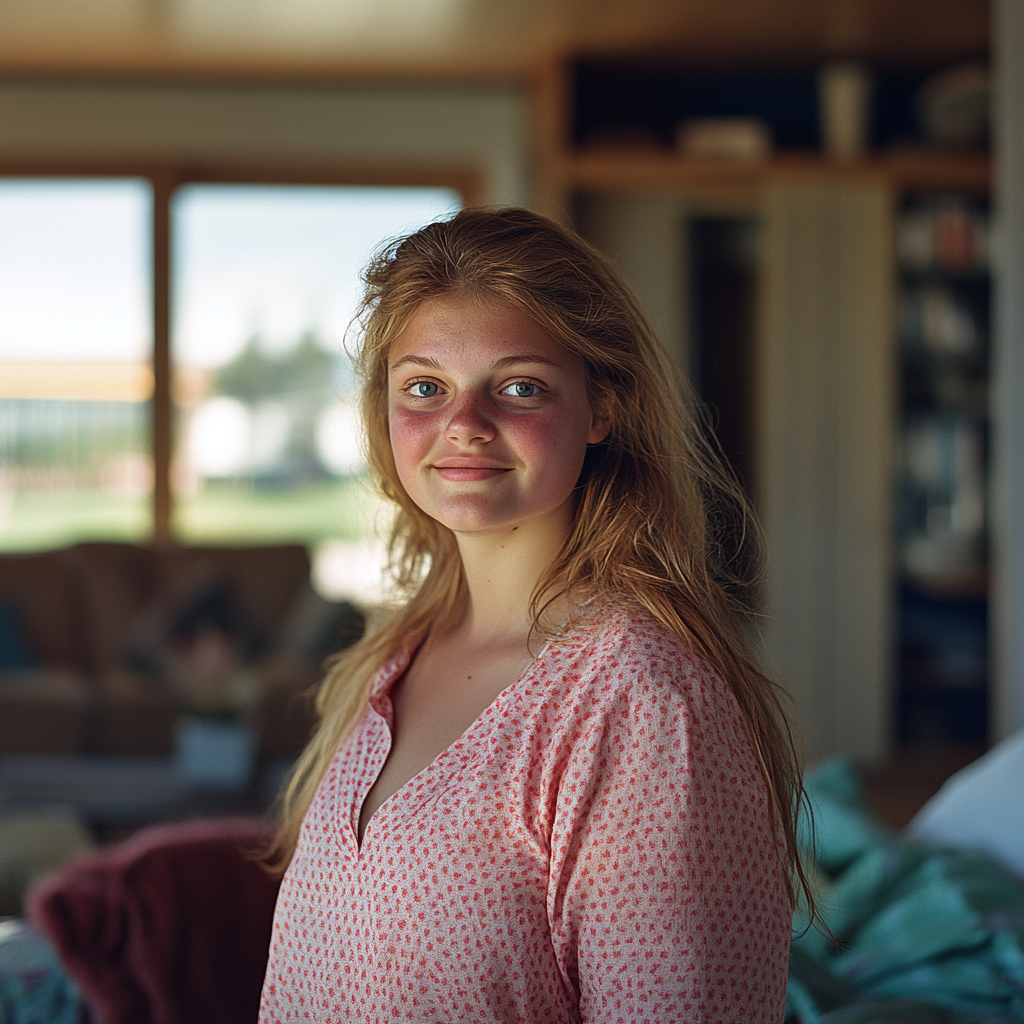
A happy woman | Source: Midjourney
“Pack your things and leave,” he demanded.
She gaped at him, tears forming. “You can’t mean that. I’m your mother!”
“And Jenna is my WIFE! Those are my daughters! If you can’t respect them, you’re not part of our lives!”
For once, Lorraine was speechless. She stormed upstairs to pack, slamming doors as she went. Derek turned to me, his eyes full of remorse.
“I’m so sorry, my love. I didn’t know.”
I let out a shaky breath, the tension easing just a little. “I just want us to move forward.”

A happy woman with her man | Source: Midjourney
Lorraine left that night. My husband apologized repeatedly, vowing to make things right. And he did. He changed the locks, blocked his mother’s number, and even reported the nurse who had taken the bribe!
It wasn’t easy, but for months we worked on rebuilding our life. One evening, as I rocked Ella and Sophie to sleep, I realized Lorraine had tried to destroy us but only managed to bring us closer together.
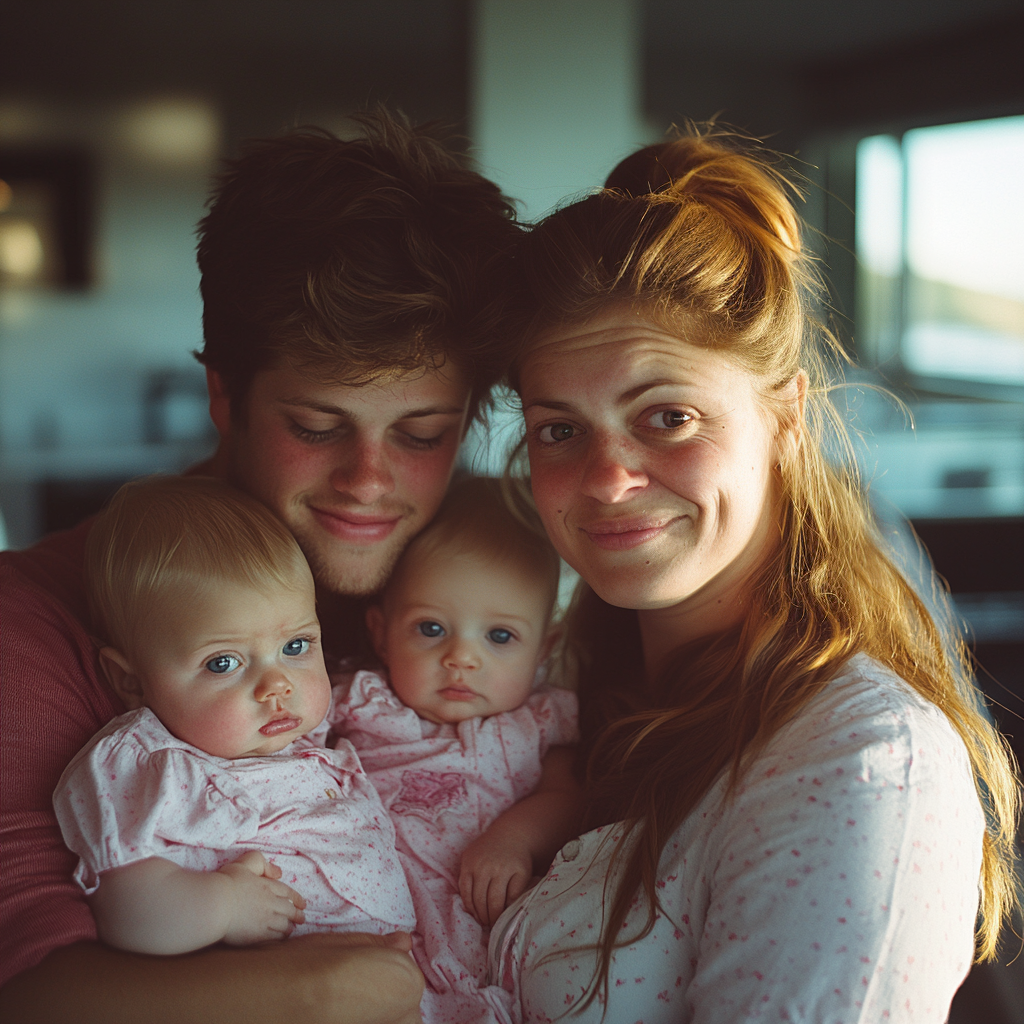
A happy couple with their twins | Source: Midjourney



Leave a Reply